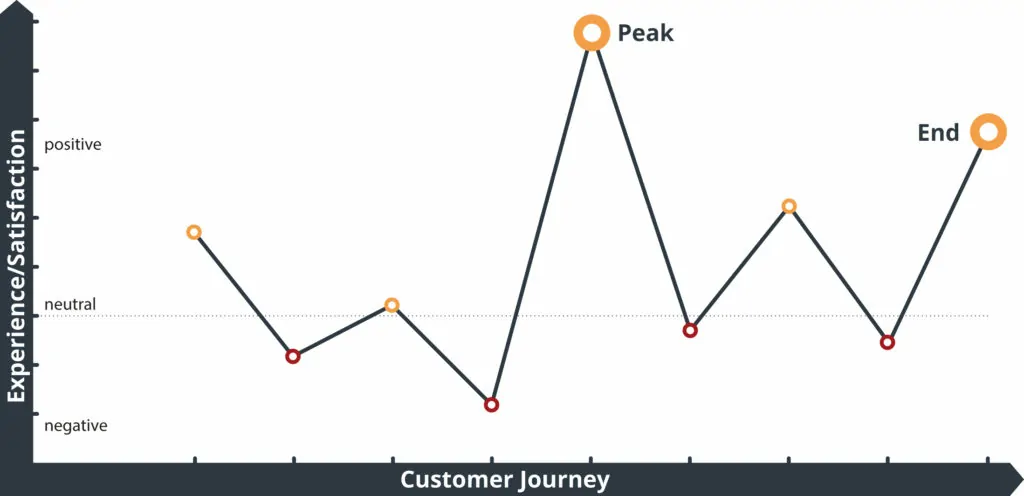The Peak-End Rule or Why Customer Experience Should Never be Left to Chance with Customer Experience Management
April 8, 2020

April 8, 2020

Once upon a time, people said that the first impression counts. But what’s the story with the customer experience? Does only the first impression matter or does the experience arise from the total of all positive and negative experiences that a customer has with a company? What influences our perception?
To answer the question about how we evaluate past experiences, the psychologist and Nobel Prize winner Daniel Kahnemann developed the peak-end rule. This rule shows that for the evaluation of an experience, only the most intensive moment (positive or negative) and the end are relevant. The memory of an experience is not formed from the first impression or the total of all moment experienced, but rather from how we perceive the most intensive moment of the experience and the end. As with a series of snapshots, in retrospect, our memory forms an average value from the perception of the high point and the end. Here, it seems to us that we are unconsciously hiding whole parts of an experience in our memory.

What does this rule mean for customer experience management?
The peak-end rule shows us that we act much more emotionally than we think we do. It also teaches us how important it is to get to know the customer’s entire journey and to design it so that there are surprising high points and a brilliant end. This way, negative experiences will be forgotten quickly and the customer will remain loyal to your company.
Don't miss a thing.
Subscribe to our latest blog articles.